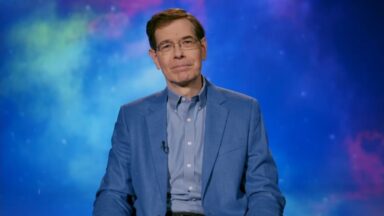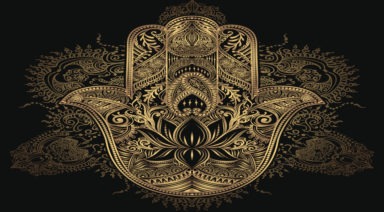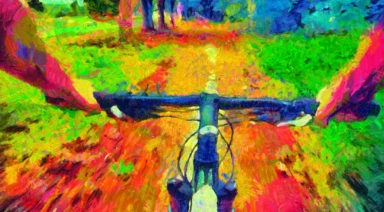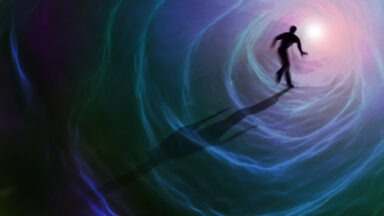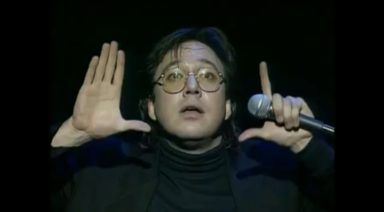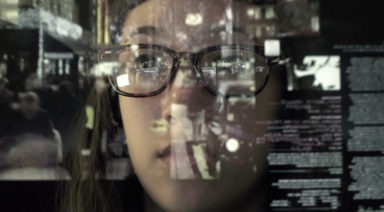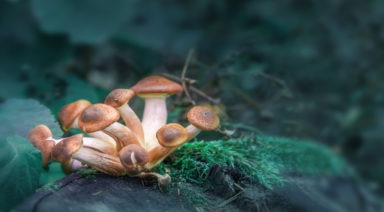We’re Born Natural Innovators, So Does School Kill Creativity?
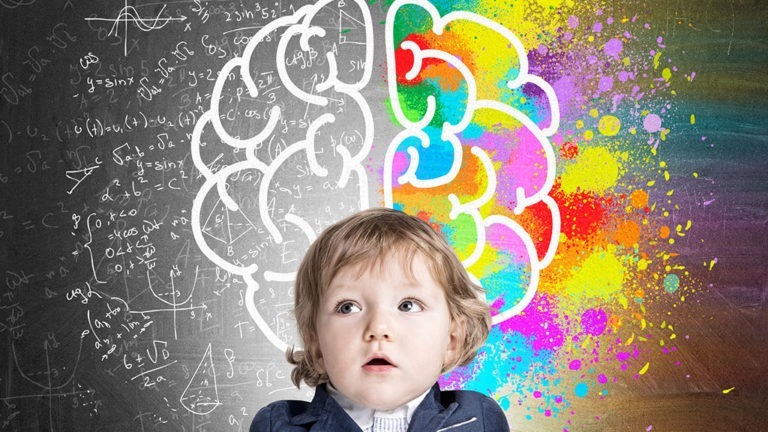
As children, we’re born with wild and inventive imaginations. In fact, 98 percent of children are born creative geniuses according to a test devised by NASA scientists. But as we get older that figure dwindles, and by adulthood, the number of creative geniuses drops to an astonishingly low average. Which begs the question: does school kill creativity?
George Land’s Creativity Test
When the deputy director for NASA wanted to figure out how to separate creative types from the rest, he tapped George Land to create a test. The goal was to seclude those who could think outside the box and come up with atypical solutions to some of NASA’s toughest problems. So, in 1968, he created a test that accurately predicted creativity, but then found himself faced with the question of where creativity comes from. Is it learned, or does it come from experience?
Land decided to apply his test to a range of age groups to see how creativity varied as we get older. He used a sample of 1,600 children and continued the study into his subjects’ adulthood. Incredibly, he found that by the time they reached maturity, only two percent of subjects passed the creativity test, despite their creative success as kids.
Land learned there are two patterns for the way we generate ideas in our minds. The first is divergent thinking, or being able to generate new possibilities – where creativity comes from. The other was convergent thinking, where we judge something by testing, criticizing and evaluating it.
As it turns out, Land says we’re taught to use both types of thinking simultaneously, forcing them to compete with each other. When we think of new possibilities, we’re immediately judging, criticizing and censoring them, without just letting them come to the surface.
Creativity and Ken Robinson’s Ted Talk
One of the most-watched TED talks of all time belongs to Ken Robinson who carries the torch for Land in the fight to bring back creativity. Since his wildly successful speech garnering nearly 50 million views, he has written books and given several more TED talks discussing how we can tap back into that latent creativity.
Robinson noticed that our education system teaches us that being wrong is the worst possible outcome. Nowhere is there a better example of this than standardized testing.
Our thought process is forced to conform to controlled paradigms of right and wrong, and so ideas that don’t fit the mold are rejected. And in the past few decades, ascription to that paradigm has been pushed harder by prescribing drugs to children who don’t easily fall in line with the system’s ideal standards.
Robinson points to the example of Gillian Lynne, one of the most famous theater choreographers who’s made millions for her work on Broadway shows, including Cats and Phantom of the Opera. When she was a child she struggled with school and was told she had a learning disorder. Her parents took her to a doctor to figure out what was wrong and potentially prescribe her medication. The doctor told them she wasn’t sick, she just needed to pursue dancing. And the rest is history.
Imagine how many dancers, artists, and creative types have had their potentials wasted because our system doesn’t have the time or patience to guide them in the right direction. Instead, we’re disciplined to follow narrow paths and if we don’t conform, we’re told that we failed.

Robinson says that a teacher’s job is not just to relay information that they learned to their students; not to simply be a delivery system. That’s part of it, he says, but there’s so much more.
He says that teachers are the lifeblood of success to schools, they should provoke, stimulate, and mentor students. Education, he says, is not the same as learning, learning requires engagement and sparked curiosity.
Louis Mobley’s Creative Insights
Before Land created his creativity test for NASA, Louis Mobley was hired by IBM to teach its top employees how to think creatively – his teachings led to the creation of the IBM Executive School.
Mobley quickly found that many of the executives already working for IBM didn’t fall within the expected parameters when it came to standardized testing, so he realized he needed to figure out what made them successful leaders. The answer: being able to think creatively. So he formed a list of six creative insights he found were key to success in leadership.
- Traditional teaching methods, like testing and memorization, were less than worthless. These systems were counterproductive to creativity and forced students to think linearly when instead they should be thinking in a non-linear manner.
- The process of becoming creative is an unlearning process. Instead of expecting students to think within preconceived assumptions, he wanted them to overturn existing beliefs.
- Being creative can’t be learned, it’s innate within us and must be released by doing it. Often creativity was channeled offline and in informal modes of peer to peer interaction.
- Hanging around creatives was the best way to inspire creativity.
- Creativity is highly associated with self-knowledge – it is impossible to overcome biases if we’re not aware of them.
- You’re allowed to be wrong. Good ideas come from lots of bad ones. The reason we don’t hit our potential is from fear of being wrong.
The truth in Mobley’s learnings is nowhere more obvious than in the success of IBM, and it’s unfortunate that these axioms aren’t applied more in our education system. But if there’s one thing that all of these researchers learned from studying creativity, it’s that we never lose it, it stays latent in all of us. In order to foster creativity, one must encourage its expression and not fear being wrong every now and then.
432 Hz Frequency: What It Is And How To Connect With Its Power

The 432 Hz frequency is a musical tuning used since ancient times by various cultures due to its harmonizing effect on the body and mind. Its sound resonates with mathematical patterns found in nature and is considered a tool for well-being and the expansion of consciousness. In this article, we explore what the 432 Hz frequency is, its uses, and how to incorporate it into daily life.
Table of Contents
- What Is The 432 Hz Frequency?
- What Is The 432 Hz Frequency Used For?
- Differences Between 432 Hz And 440 Hz Frequencies
- How To Use The 432 Hz Frequency In Your Daily Life
What Is The 432 Hz Frequency?
The 432 Hz frequency is a musical tuning that maintains a mathematical relationship with nature and the universe. It is in tune with the golden ratio, present in the structure of the human body and in patterns such as the Fibonacci sequence. Its sound is more harmonious and balanced compared to the standard 440 Hz tuning.
Different civilizations have used this frequency in their spiritual and ceremonial practices. In ancient Greece, Pythagorean music was based on mathematically perfect scales, while in Egypt and India specific sounds were used to induce deep meditative states. Many ancient instruments were designed to vibrate at 432 Hz, suggesting an intuitive understanding of its impact on consciousness.
In the series Sound of Creation, available on Gaia, experts like Gregg Braden and Dr. Robert Gilbert explore the relationship between sound, sacred geometry, and the vibration of the universe. Through scientific findings and ancestral knowledge, this series reveals how certain frequencies can influence perception and human well-being.
What Is The 432 Hz Frequency Used For?
The 432 Hz frequency has multiple applications for harmonizing the body and mind. Its balanced vibration influences emotional states, concentration, and energetic health. Below are some of its main functions:
- Deep relaxation: It lowers heart rate and brain activity, reducing stress and anxiety. Its sound has a calming effect that facilitates meditation.
- Enhanced concentration: It increases mental clarity and promotes focus. Listening to music in this frequency during study or work improves information retention.
- Energy balance: It aligns the flow of energy in the body and harmonizes the chakras. Its vibration restores physical and emotional well-being.
- Greater connection with nature: It resonates with the Earth’s frequency, strengthening the sense of unity with the environment. Listening to it outdoors enhances its beneficial effects.
- Induction to restorative sleep: It promotes progressive relaxation that facilitates deep rest. Using it before bedtime helps improve sleep quality and reduce anxiety before sleeping.
- Emotional healing: It releases accumulated tension and balances the nervous system. Its vibration works on the subconscious, promoting well-being and emotional balance.
- Creativity stimulation: It activates areas of the brain related to inspiration and imagination. It is ideal for boosting creativity in artistic and expressive disciplines.
Differences Between 432 Hz And 440 Hz Frequencies
The 432 Hz and 440 Hz frequencies are both used to tune musical instruments, but generate different effects in those who listen to them. Today, most music is tuned to 440 Hz, a standard officially adopted in the 20th century. However, 432 Hz has been used in various traditions for its more harmonic sound and its ability to induce relaxation.
Many people perceive music tuned to 432 Hz as softer and more balanced, whereas 440 Hz may feel more tense and stimulating. For this reason, 432 Hz is preferred in practices involving meditation, healing, and wellness. While both frequencies can trigger emotional and physical responses, 432 Hz has become a popular alternative for those seeking a more harmonious and profound sound experience.
How To Use The 432 Hz Frequency In Your Daily Life
Incorporating the 432 Hz frequency into your daily routine is a simple way to promote well-being and emotional balance. You can listen to music tuned to 432 Hz during meditation, upon waking, while working, or before sleeping. It’s also helpful in yoga sessions, massages, or any relaxation practice, as its vibration enhances focus and energetic harmony.
-
432 Hz Music For Meditation And Mental Balance
Meditating with 432 Hz music enhances relaxation and facilitates connection with the present moment. Its vibration induces a state of mental calm, reducing internal noise and allowing for a deeper meditative experience. Many people use it to relieve anxiety, improve focus, and enhance introspection.
An example of this frequency can be found in the series Fractal Universe: Meditations for Conscious Elevation, available on Gaia, where sound patterns and geometry are explored to facilitate deep meditative states. The first episode uses a frequency based on the Schumann resonance, related to the Earth’s natural vibration, allowing the mind to synchronize with a state of balance and expansion.
-
Using The 432 Hz Frequency For Energy Healing
The 432 Hz frequency is used in sound therapies to balance the body’s energy and release emotional blockages. It’s believed that its vibration harmonizes the chakras and improves the flow of vital energy, making it effective in practices like Reiki, sound bowl therapy, and vibrational healing sessions.
Listening to this frequency while practicing breathing or visualization exercises can enhance its effects. Its sound generates a sensation of well-being and stability, helping to restore emotional and physical balance. For this reason, many people incorporate it into their healing and self-discovery journey.
-
How To Listen To 432 Hz Music For Better Sleep
Music in 432 Hz is an effective tool to improve sleep quality and reduce anxiety before sleeping. Its soft, enveloping sound slows down mental activity, helping the body enter a state of deep relaxation. Listening to it for a few minutes before bed can ease the transition to sleep and reduce insomnia.
To enhance its effects, it’s advisable to create a quiet and distraction-free environment. You can combine the music with slow breathing exercises or nature sounds tuned to the same frequency. This practice calms the nervous system and promotes more restorative rest.














